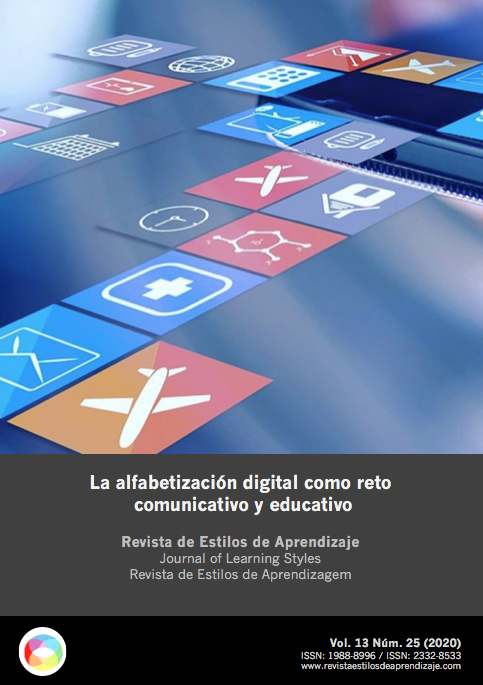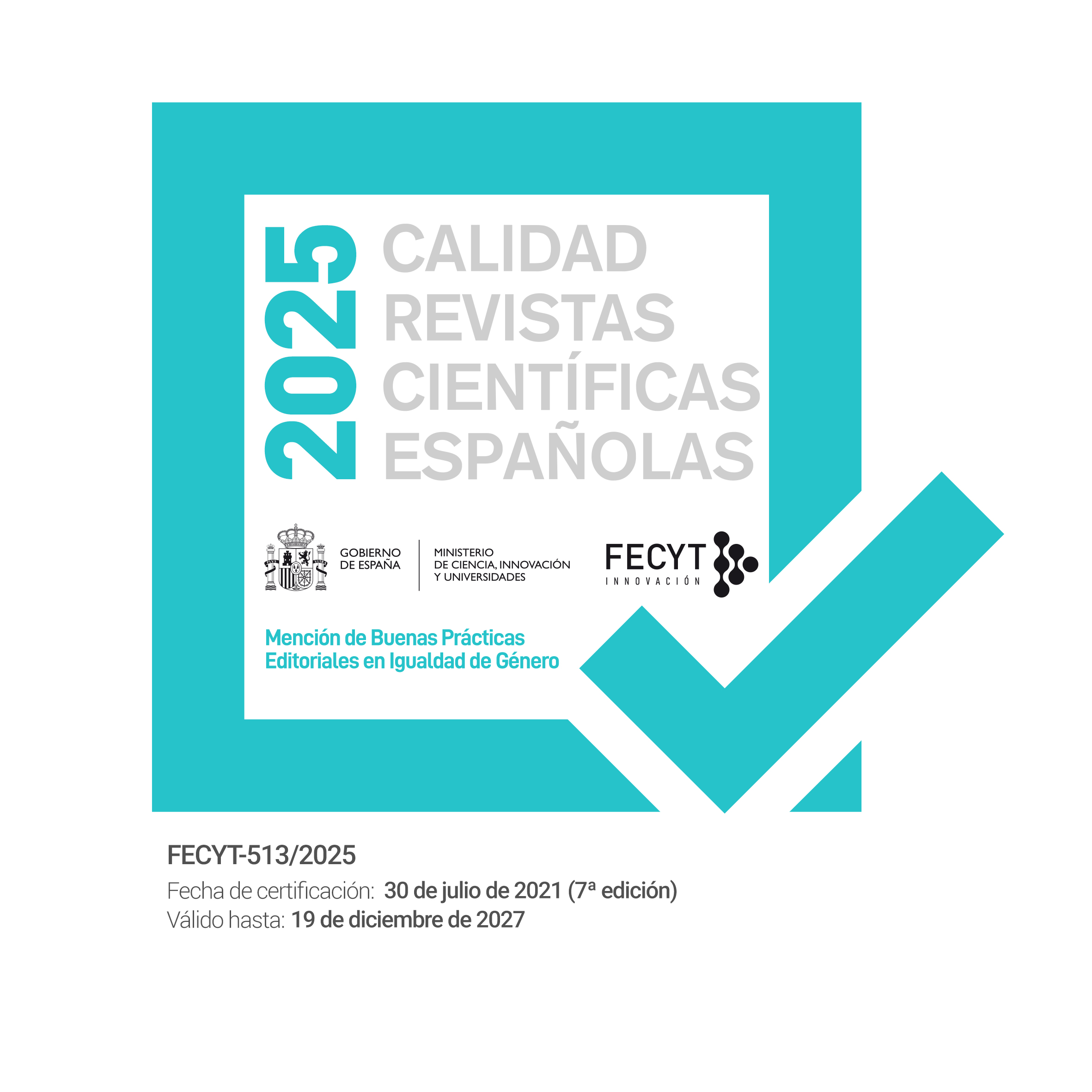Foreign Language Learners' Experiences Regarding their Learning Style in Higher Education
DOI:
https://doi.org/10.55777/rea.v13i26.1515Keywords:
Learning Styles, Learning experiences, Academic Achievement, Higher EducationAbstract
Learning styles is a cognitive factor that influences learning. Taking care of them in the teaching practice can help teachers provide positive learning experiences so that learners succeed in the acquisition of foreign languages or any other field of study. The purpose of this research was to identify the relationship between learning styles, academic achievement, and students’ learning experiences in higher education. A mixed-methods research design was employed. The quantitative results showed that students have a combination of learning styles, a predominance of the reflective style and that there was no significant relationship between learning styles and academic achievement. Qualitative results showed that negative learning experiences arose when learning styles and emotional factors were put aside. Based on the findings, the researcher concludes that students need to develop the four learning styles types so that students can have the specific qualities a foreign language learner need.
Downloads
References
Alonso, C. M., Gallego, D. J., & Honey, P. (1997). Los estilos de aprendizaje: procedimientos de diagnósticos y mejora (7ª. ed.). Bilbao, España: Mensajero.
Alonso, M., Duque, L., & Correa, J. (2013). Modelos de estilos de aprendizaje: una actualización para su revisión y análisis. Revista Colombiana de educación, 64, 79-105. Retrieved from https://bit.ly/33soU3l
Álvarez-Gayou, J. L. (2003). Cómo hacer investigación cualitativa. Fundamentos y metodología. México: Paidós.
Alnujaidi, S. (2019). The Difference between EFL Students' Preferred Learning Styles and EFL Teachers' Preferred Teaching Styles in Saudi Arabia. English Language Teaching, 12(1), 90-97.doi: 10.5539/elt.v12n1p90
Atmowardoyo, H., & Salija, K. (2019). The learning styles of students and their problems in speaking English at the second grade of MAN Pangkep. Psychology, 1-16. Retrievedfrom https://bit.ly/33vjjcD
Barja, L. A. G. (2015). Diagnóstico de los estilos de aprendizaje utilizados para la adquisición del inglés como segunda lengua en el centro boliviano americano-Sucre, Journal of Learning Styles, 8(16). Retrieved from https://bit.ly/3lbitHU
Bahamón, M., Vianchá, M., Alarcón, L., & Bohórquez, C. (2013). Estilos y estrategias de aprendizaje relacionados con el logro académico de los universitarios. Pensamiento psicológico, 11(1),115-129. Retrieved from https://bit.ly/3cW8tiW
Beeve, L. (1988). Issues in second language acquisition. Boston: Heinle &Heinle.
Biabani, M., & Izadpanah, S. (2019). The Study of Relationship between Kolb’s Learning Styles, Gender and Learning American Slang by Iranian EFL Students. International Journal of Instruction, 12(2), 517-538. doi:10.29333/iji.2019.12233a
Blanco, N., & Pirela, J. (2016). La complementariedad metodológica: Estrategia de integración de enfoques en la investigación social. Espacios Públicos, 19(45), 97-11. Retrieve from https://bit.ly/3cWvhz5
Briones, G. (2002) Metodología de la investigación cuantitativa en ciencias sociales. Colombia: ICFES
Cabello, G., Valenzuela, M., Yánez, F., & Sayós, R. (2018). Análisis comparativo del perfil docente del profesorado esperado por los estudiantes de la Universidad de Tarapacá y de los de la Universidad de Barcelona. Interciencia, 43(3), 208-214. Retrieved from https://bit.ly/34pV3aR
Castro, S., & Guzmán, B. (2005). Los estilos de aprendizaje en la enseñanza y el aprendizaje: una propuesta para su implementación. Revista de investigación, 58, 84-102. Retrieved from https://bit.ly/30z8nZp
Cassidy, S. (2004). Learning styles: An overview of theories, models, and measures. Educational psychology, 24(4), 419-444. Retrieved from https://bit.ly/33sqZwb
Creswell, J.W. (2009). Research design: Qualitative; Quantitative and mixed methods approaches. Thousand Oaks, CA: Sage.
Cué, J. L. G., Rincón, J. A. S., & García, C. M. A. (2008). Identificación del uso de la tecnología computacional de profesores y alumnos de acuerdo con sus estilos de aprendizaje. Journal of Learning Styles, 1(1), 168-185. Retrieved from https://bit.ly/36w419i
Dai, Y. W. (2015). The relationships among motivation, learning styles and English proficiency in EFL music students. International Journal of English Linguistics, 6(5). 75-79. Retrieved from https://bit.ly/34vDAy6
Debreli, E. (2016). Pre-Service Teachers’ Belief Sources about Learning and Teaching: An Exploration with the consideration of the educational programme nature. Higher Education Studies, 6(1), 116-127. Retrieved from https://bit.ly/3lbeyLe
De Moya, M. Hernández, J. Hernández, J., & Cózar, R. (2011). Análisis de los estilos de aprendizaje y las TIC en la formación personal del alumnado universitario a través del cuestionario. Revista de investigación educativa, 29(1), 137-156. Retrieved from https://bit.ly/2StB1Ha
EF EPI. (2018). El ranking mundial más grande según su dominio de inglés. EF. Retrieved from https://bit.ly/3lggP86
Effendi, L. S., Saleh, S., & Yufrizal, H. (2019). Improving students’ ability in English based on learning style of private Higher Education Institutions. IOSR Journal Of Humanities And Social Science (IOSR-JHSS), 24(2), 33-40. doi: 10.9790/0837-2402013340
Elyas, T., AlHashmi, B., & Fang, F. (2020). Cognitive diversity among EFL learners: implications for teaching in higher education. TEFLIN Journal, 31(1), 44-69. doi: 10.15639/teflinjournal.v31i1/44-69
Ellis, R. (1994). The study of second language acquisition. Oxford: Oxford university press.
Feng, Y., & Díaz-Granados, F. I. (2013). Estilos de aprendizaje de los estudiantes de segunda lengua de la Universidad del Norte de Barranquilla. Journal of LearningStyles, 6(12), 1-11. Retrieved from https://bit.ly/2GgAB4t
Gibbs, G. (2007). El análisis de datos cualitativos en investigación cualitativa. Madrid, España: Morata.
Gil, G., & Domingo, J. (2006). Diagnosticar los estilos de aprendizaje. Trabajo presentado en el II Congreso Internacional de Estilos de Aprendizaje. Concepción, Chile. Retrieved from https://bit.ly/2F1tOuP
Hernández, F., & Díaz, L. (2015). La escritura autobiográfica en inglés lengua extranjera: experiencia de aula. Lenguaje, 43(2), 333-358. Retrieved from https://bit.ly/3jvPLAZ
Herrera, L. (2012). Self-access language learning: students’ perceptions of and experiences within this new mode of learning. Profile, 14(1), 113-127. Retrieved from https://bit.ly/3d5D0L9
Hervás, R. (2008). Identificación de variables que influyen en los estilos de aprendizaje. Clases para conocer cómo aprenden los alumnos. Revista de estilos de aprendizaje, 1(1), 143-167. Retrieved from https://bit.ly/2EZW4xK
Ho, A., Chan, C., Sun, L., & Yan, J. (2004). Students' perceived difficulties in learning and their implications for learning to learn. En O. Kwo, T. Moore, y J. Jones (Eds.), developing learning environments: Creativity, motivation and collaboration in higher education (pp. 245-268). Hong Kong: Hong Kong University Press.
Jenkins, J., & Clarke, T. (2017). Engaged Journalism: Using Experiential Learning Theory (ELT) for In-Class Journaling Activities. International Journal of Teaching and Learning in Higher Education, 29(1), 154-161. Retrieved from https://bit.ly/3lcjPC5
Keefe, J. W., & Ferrell, B. G. (1990). Developing a defensible learning style paradigm.Educational leadership, 48(2), 57-61. Retrieved from https://bit.ly/3iy13DD
Larrosa, J. (2009). Experiencia y alteridad en educación. En C, Skliar y J, Larrosa, Experiencia y alteridad en educación. (p.p. 13-45). Argentina: Homo Sapiens.
Luengo, R., & González, J. (2005). Relación entre los estilos de aprendizaje y el rendimiento en matemáticas y la elección de asignaturas optativas en alumnos de ESO. Relieve, 3, 147-165. Retrieved from https://bit.ly/30xcFRb
Manzano, M. (2007). Estilos de aprendizaje, estrategias de lectura y su relación con el rendimiento académico en la segunda lengua, (Tesis doctoral, Granada, España). Retrieved from https://bit.ly/2HTAEU5
Marzulina, L., Pitaloka, N. L., & Yolanda, A. D. (2019). Learning Styles and English Proficiency of Undergraduate EFL Students at One State Islamic University in Sumatera, Indonesia. Edukasi: Jurnal Pendidikan dan Pengajaran, 6(1), 214-228.
Retrieved from https://bit.ly/2Gpjnlo
Mitchell, R. (1998). Second language learning theories. New York: Routledge.
Munfa'ati, H., Mujiyanto, J., & Suwandi, S. (2020). THE The Effect of Discovery Learning and Direct Instruction on EFL Learners with Different Learning Styles. English Education Journal, 10(1), 347-403. Retrieved from https://bit.ly/34tk9pk
Payaprom, S., & Payaprom, Y. (2020). Identifying learning styles of language learners: A useful step in moving towards the learner-centred approach. Journal of Language and Linguistic Studies, 16(1). doi: 10.17263/jlls.712646
Pei-Shi, W. (2012). The Effect of Learning Styles on Learning Strategy Use by EFL Learners. Journal of Social Sciences, 8(2), 230-234. Retrieved from https://bit.ly/3niHmmU
Pishghadam, R., Zabetipour, M., & Aminzadeh, A. (2016). Examining emotions in English language learning classes: A case of EFL emotions. Issues in Educational Research, 26(3), 508. Retrieved from https://bit.ly/3jB5sqI
Recke, A. D., Ortiz, J. F. Z., & Rodríguez, A. L. (2016). Learning styles and their relationship with academic performance in English as a second language of students in a Mexican university. Journal of Learning Styles, 9(17), 108-143. Retrieved from https://bit.ly/34meotO
Remolina De Cleves, N., Velásquez, B. M., & Calle, M. G. (2004). El maestro como formador y cultor de la vida. Tabula rasa, 2, 263-281. Retrieved from https://bit.ly/30zjilZ
Rowland, L. (2011). Lessons about learning: Comparing learning experiences with language research. Language teaching research. 15(2), 254-267. Recuperado de:10.1177/1362168810388726
Sawir, E. (2005). Language difficulties of international students in Australia: The effects of prior learning experiences. International education journal, 6(5), 567-580. Retrieved from https://bit.ly/2SqhcAz
Taheri, H., Bagheri, M. S., Bavali, M., & Khajavi, Y. (2019). EFL learners’ L2 achievement and its relationship with cognitive intelligence, emotional intelligence, learning styles, and language learning strategies. Cogent Education, 6(1),1-21. doi: 10.1080/2331186X.2019.1655882
Tin, T. B. (2013). Exploring the development of ‘interest’ in learning English as a foreign/second language. RELC Journal, 44(2), 129-146. doi: 10.1177/0033688213488388
Trang, T. T. T. & Moni, K. (2015) Management of foreign language anxiety: Insiders’ Awareness and experiences, Cogent Education, 2, 1-20. doi: 10.1080/2331186X.2014.992593
Valenzuela, G., & González, A. (2010). Estilos de aprendizaje de los estudiantes de la universidad de Sonora, México estudio de caso. Revista de estilos de aprendizaje. 6(3), 92-102. Retrieved from https://bit.ly/2GF8ECV
Downloads
Published
How to Cite
Issue
Section
License
By submitting the original, the author(s) declare that they are aware of and accept, in full, the privacy policy as well as the copyright of the Learning Styles Magazine.
The Learning Styles Magazine offers free and open access to its content, completely free of charge, in order to bring scientific research to its readers and society in general. All digital contents are free and open access and are published under a Creative Commons license:

Rights are granted under the Creative Commons Reconocimiento-NoComercial-SinObraDerivada 4.0 Internacional (CC-BY-NC-ND 4.0)
The Learning Styles Magazine is an open access journal. Publication of articles or reviews in the Journal does not entitle you to any remuneration. For authors as well as readers, the journal is free Creative Commons Reconocimiento-NoComercial-SinObraDerivada 4.0 Internacional (CC-BY-NC-ND 4.0).
With this licence, the reproduction and dissemination of the contents of the magazine for educational, social and knowledge transmission purposes is permitted, without any profit motive in mind, provided that the source and authorship are not modified. The licence granted to Learning Styles Magazine allows the copying and distribution of the magazine's contents, as long as the authorship of the work is recognised, correctly specifying the author and the publishing entity. The work may not be used for commercial purposes, nor may it be altered, transformed or generated from this work.
The publication of articles or reviews in the Journal does not give the right to any remuneration.
The Learning Styles Journal invites the author/authors to increase the visibility and scope of their articles published by re-disseminating them in:
- Web spaces and personal networks, as well as in scientific meetings and forums
- Open institutional archives in Universities, educational repositories and Research Centres.
- Academic and scientific networks (Researchgate, Academia.edu, Plubons, etc.)
All these spaces and publications must include all the bibliographic data of the publication.

























